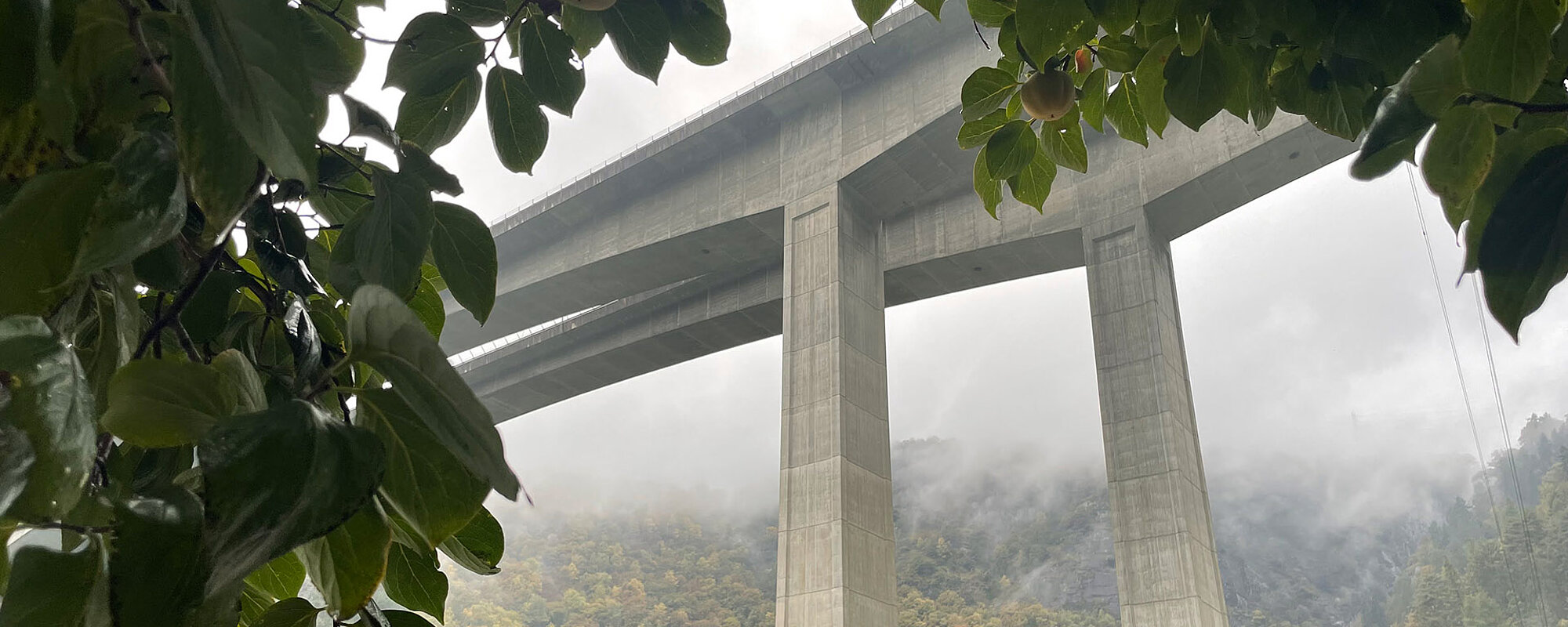Bridge construction
Acceleration in the construction process – Use of Concretum® concrete in bridge construction
In both the renovation and new construction of bridges, acceleration measures and high durability are essential. By using selected products from Concretum, construction and repairs can be carried out quickly and durably while the infrastructure remains in operation.
Infrastructure works are often bottlenecks in heavily used traffic networks. With rapid-hardening concrete, work on such structures can be completed within just a few hours or during a night or weekend closure. Durability is ensured at a high-level thanks to Concretum technology.
When repairing bridges, long waiting times are required to meet the drying criteria for bridge sealant. With Concretum's fast-drying concrete, this waiting time can be reduced to just two days while maintaining high durability.
Water tightness and crack minimization are important quality criteria in bridge construction. Our low-shrinkage concrete meets both of these criteria. Concretum's low-shrinkage concretes are ideal for long-lasting concrete repair on bridge structures. Surface cracking is permanently reduced due to shrinkage reduction and fiber reinforcement. The stresses caused by the "new-on-old" situation are largely absorbed without cracks. This allows, for example, the creation of trafficable concrete surfaces without sealing layers, enabling slender cross-sections and thus low self-weight.
Other applications for rapid-hardening concrete include: reprofiling, joint closures, bridge bearing replacement, slip plates, and road transitions.
Project Example: Repair of the Reuss Bridge in Göschenen:
The municipality of Göschenen is located in the canton of Uri and is exposed to significant environmental influences. In particular, structures such as the Reuss Bridge in Göschenen require regular maintenance. Many of these are listed heritage buildings. To preserve the structural components of the bridge, investments are made in sustainable construction to maintain the overall appearance of the bridge.
Bridge 1918 - Natural Stone Arch Bridge:
The bridge's massive water saturation needed to be addressed, and the masonry required localized repairs—this involved a comprehensive sealing of the natural stone arch. The goal was to achieve a remaining service life of at least 80 years until the next structural intervention.
Scope of Work:
For the substructure, a concrete slab (gravel trough) was installed under the gravel as a seal for the vault. The gravel and the fill up to the underside of the concrete slab were removed and then reinstalled.
To seal the natural stone arch, a floating, seamless, reinforced concrete slab was installed beneath the gravel with a roof slope. A special concrete mix was designed for this purpose. The concrete was enhanced with the shrinkage-reducing agent Concretum® D-SOLO, as well as high-modulus polymer fibers Concretum® SUPERFIBER 40/8. The surface was finished in a wet-on-wet process, allowing for a crack-free cross-section.
The existing sidewalk on the Göschenen side was completely renovated. The new sidewalk was designed as a cantilevered concrete slab and monolithically connected to the new dense concrete slab.
Concrete Curb and Cantilever Bridge Slab:
FT-resistant, shrinkage-reduced, fiber-reinforced.
Concrete Sealing Slab (Gravel Trough) under Rails:
Shrinkage-reduced, fiber-reinforced.
For more information about the project: Repair of the Reuss Bridge in Göschenen
Downloads:
Here you will find all Safety Data Sheets, Technical Data Sheets, Product Brochures, and Project Reports.

